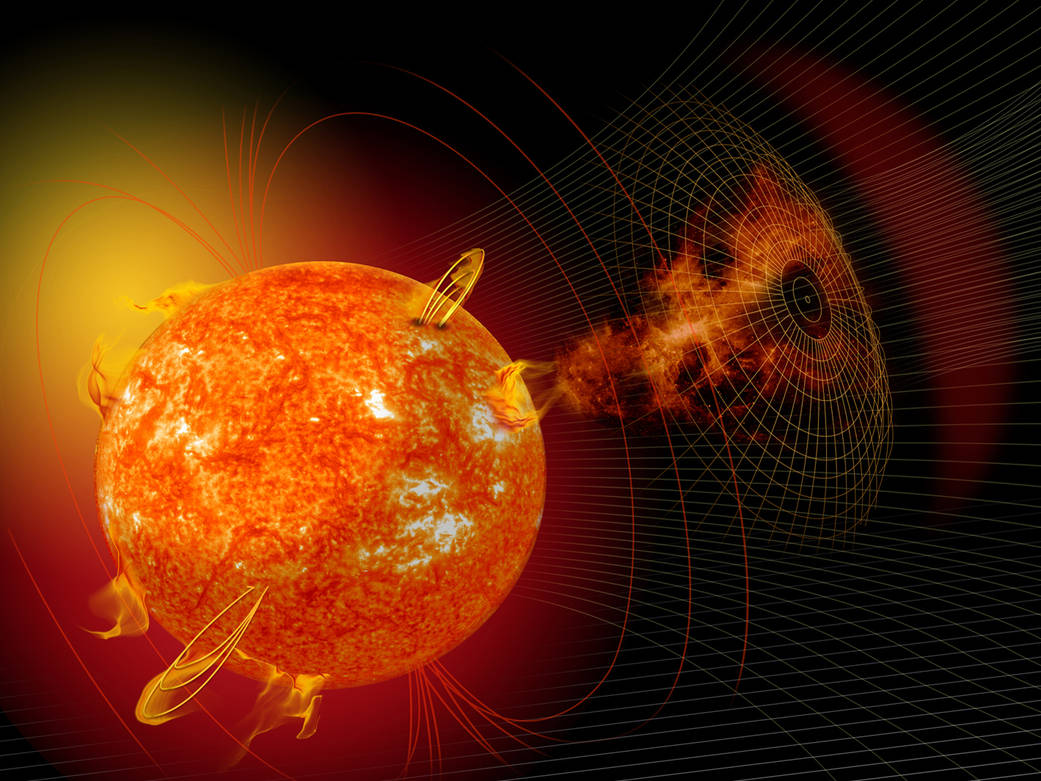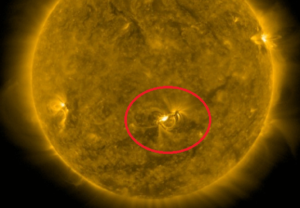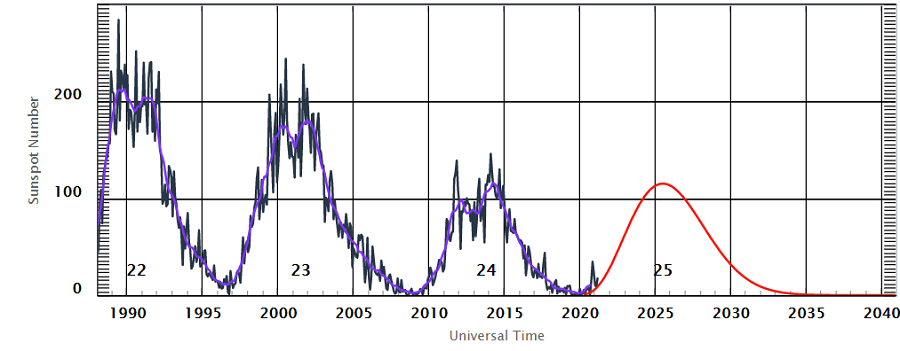
The National Weather Service’s Space Weather Prediction Center (SWPC) still has a Geomagnetic Storm Watch in effect for Sunday due to a significant, potentially Earth-facing Coronal Mass Ejection (CME) impact. The incident already created a solar tsunami.
According to the SWPC, a partial halo Coronal Mass Ejection (CME) was associated with a C3 flare from Region 2816 on the Sun. After a thorough analysis by SWPC forecasters and computer forecast models that have skill in understanding these types of events, it appears likely that an Earth-directed component of this blast is due to arrive early to mid-day on the 25th. “The forecast now calls for likely geomagnetic storm conditions, with the potential to reach G2 (Moderate) storm levels, therefore, a G2 Geomagnetic Storm watch has been issued,” said the SWPC in a forecast update. “While forecast confidence in an Earth-directed component is fair, timing and intensity confidence is lower.”

With a G2 – MODERATE- Geomagnetic Storm Watch up, the SWPC says many different impacts could occur around Earth. “High-latitude power systems may experience voltage alarms,” the SWPC says, adding that “long-duration storms may cause transformer damage.” In addition to disturbing radio communications on Earth’s surface, aurora could be seen as low as New York and Idaho. Ground control running spacecraft and satellites in space may also need to take corrective actions to protect spacecraft from damage from the solar blast.
Coronal Mass Ejections occur from time to time, but they aren’t always directed at Earth as this one appears to be. A coronal mass ejection is a significant release of plasma from the solar corona, often following solar flares in solar wind. These huge explosions of plasma originate from highly twisted magnetic field structures on the Sun. When these explosions occur from active sunspot regions on the Sun, it is not uncommon to see them associated with large solar flares. Some fast CMEs can reach the Earth in little as 14 hours, while others may take several days. According to the SWPC, “the first sign of a CME hitting the Earth environment is the plasma density jump due to the shock wave’s passage.” Forecasters use what is known as a coronagraph, which blocks the extremely bright disk of the Sun, so they are able to determine the CME’s size, speed, direction and density.

While typically known for their weather forecasts, the National Oceanic and Atmospheric Administration (NOAA) and its National Weather Service (NWS) is also responsible for “space weather.” While there are private companies and other agencies that monitor and forecast space weather, the official source for alerts and warnings of the space environment is the Space Weather Prediction Center (SWPC). The SWPC is located in Boulder, Colorado and is a service center of the NWS, which is part of NOAA. The Space Weather Prediction Center is also one of nine National Centers for Environmental Prediction (NCEP) as they monitor current space weather activity 24/7, 365 days a year.

Forecasters at the SWPC will continue to monitor the situation, upgrading the watch to a warning, if necessary, or increasing / decreasing the scale of expected impacts prior to the 25th.